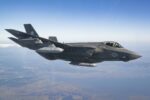DronePort Network has partnered with aerospace data analytics firm Wingbits to launch a new artificial intelligence (AI)-powered airspace intelligence platform aimed at enhancing situational awareness for uncrewed aircraft systems (UAS). The collaboration seeks to address persistent challenges in beyond visual line of sight (BVLOS) operations by fusing real-time aircraft tracking data with predictive analytics.
Strategic Partnership Targets UAS Airspace Integration Challenges
The partnership between DronePort Network—a nationwide network of drone infrastructure sites—and Wingbits—a developer of real-time aviation data solutions—marks a significant step toward enabling scalable and safe BVLOS drone operations across the United States. The core offering is an AI-enabled airspace monitoring platform that leverages Automatic Dependent Surveillance–Broadcast (ADS-B), Mode S transponder data, and other open-source aviation feeds to provide comprehensive situational awareness for drone operators.
This system is designed to serve as a foundational component of future Uncrewed Traffic Management (UTM) systems by offering persistent surveillance of cooperative aircraft in low-altitude airspace. According to both companies, the platform is already operational at several DronePort locations across the country and is being used in pilot programs supporting FAA Part 107 waivers for BVLOS flights.
How the Platform Works: Fusing ADS-B with Predictive AI
At its core, the system ingests real-time ADS-B and Mode S data from nearby crewed aircraft using ground-based receivers deployed at DronePort facilities. This raw telemetry is then processed by Wingbits’ proprietary machine learning algorithms which classify aircraft behavior patterns—such as approach trajectories or holding patterns—and predict potential conflicts with UAS flight paths.
The platform also incorporates historical flight pattern analysis and weather overlays to enhance its predictive modeling capabilities. This allows drone operators or fleet management systems to receive early alerts on potential airspace conflicts or anomalies that may affect mission safety.
- Data Sources: ADS-B Out signals, Mode S transponders, FAA open feeds
- Processing Engine: Wingbits’ AI/ML models trained on millions of flight hours
- Output: Real-time traffic visualization dashboard + API integration for GCS/UTM systems
This architecture allows the system not only to detect but also anticipate traffic behaviors—such as general aviation aircraft entering Class G airspace unexpectedly—thus improving deconfliction strategies without relying on radar coverage or cellular connectivity.
Tactical Relevance for Military & Dual-Use UAS Operations
While initially targeted at commercial drone hubs and public safety agencies operating under FAA Part 107 rulesets, the technology has clear implications for defense applications. Tactical UAS units operating in contested or GPS-denied environments often lack reliable access to cooperative surveillance tools like radar or ATC feeds. An edge-deployable version of this platform could offer:
- Tactical situational awareness: Passive detection of manned aircraft in uncontrolled airspace
- BLOS support: Enabling safer long-range ISR missions without direct operator line-of-sight
- Spectrum independence: Functionality without reliance on GNSS or LTE networks
This could be particularly useful in gray-zone scenarios such as border surveillance missions or maritime ISR where civilian traffic may intersect with military UAV patrols. Additionally, integration into C4ISR platforms could allow fusion with EO/IR sensor feeds or SIGINT payloads for layered threat detection.
Paving the Way Toward Scalable BVLOS Operations Nationwide
The FAA has consistently cited situational awareness as one of the primary barriers to routine BVLOS approvals. By deploying this system across its national network of test sites—including rural areas where radar coverage is sparse—DronePort aims to demonstrate a replicable model for low-cost UTM enablement.
“This partnership represents a critical building block toward unlocking scalable BVLOS operations,” said DronePort CEO Christopher Rittler in a joint statement. “By combining our physical infrastructure footprint with Wingbits’ advanced analytics engine, we’re closing key gaps in low-altitude visibility.”
The companies are currently working with multiple state DOTs and public safety agencies under FAA BEYOND program initiatives. Future roadmap items include integrating Remote ID feeds into the same dashboard environment and expanding coverage through mesh networking between DronePort nodes.
A Growing Ecosystem Around Low-Altitude Surveillance Tech
The collaboration reflects broader industry momentum around low-altitude surveillance solutions tailored specifically for drones. Other players such as Iris Automation (with its Casia detect-and-avoid system) and uAvionix (with SkyLine UTM services) are also targeting similar capability gaps using different technological approaches—optical sensing vs RF-based tracking vs cooperative beaconing.
This diversity underscores that no single solution will dominate; rather, layered sensing architectures combining cooperative surveillance (e.g., ADS-B), non-cooperative detection (e.g., radar/EO), and predictive analytics will likely define future standards for tactical deconfliction below 400 feet AGL.
Conclusion: From Testbeds to Tactical Deployment?
If successfully validated through current pilot programs, this AI-powered platform could become part of a modular toolkit enabling both civil and military operators to safely scale up drone operations without waiting on full-blown NextGen ATC reforms. The ability to passively monitor local crewed traffic using inexpensive hardware combined with cloud-based analytics offers a practical path forward amid regulatory uncertainty.
The dual-use potential—particularly in austere environments where radar coverage is limited—makes it worth watching not just from a commercial drone perspective but also from a defense ISR standpoint as NATO militaries expand their small-UAV fleets under digitization initiatives like MGCS/FCAS interoperability frameworks.









